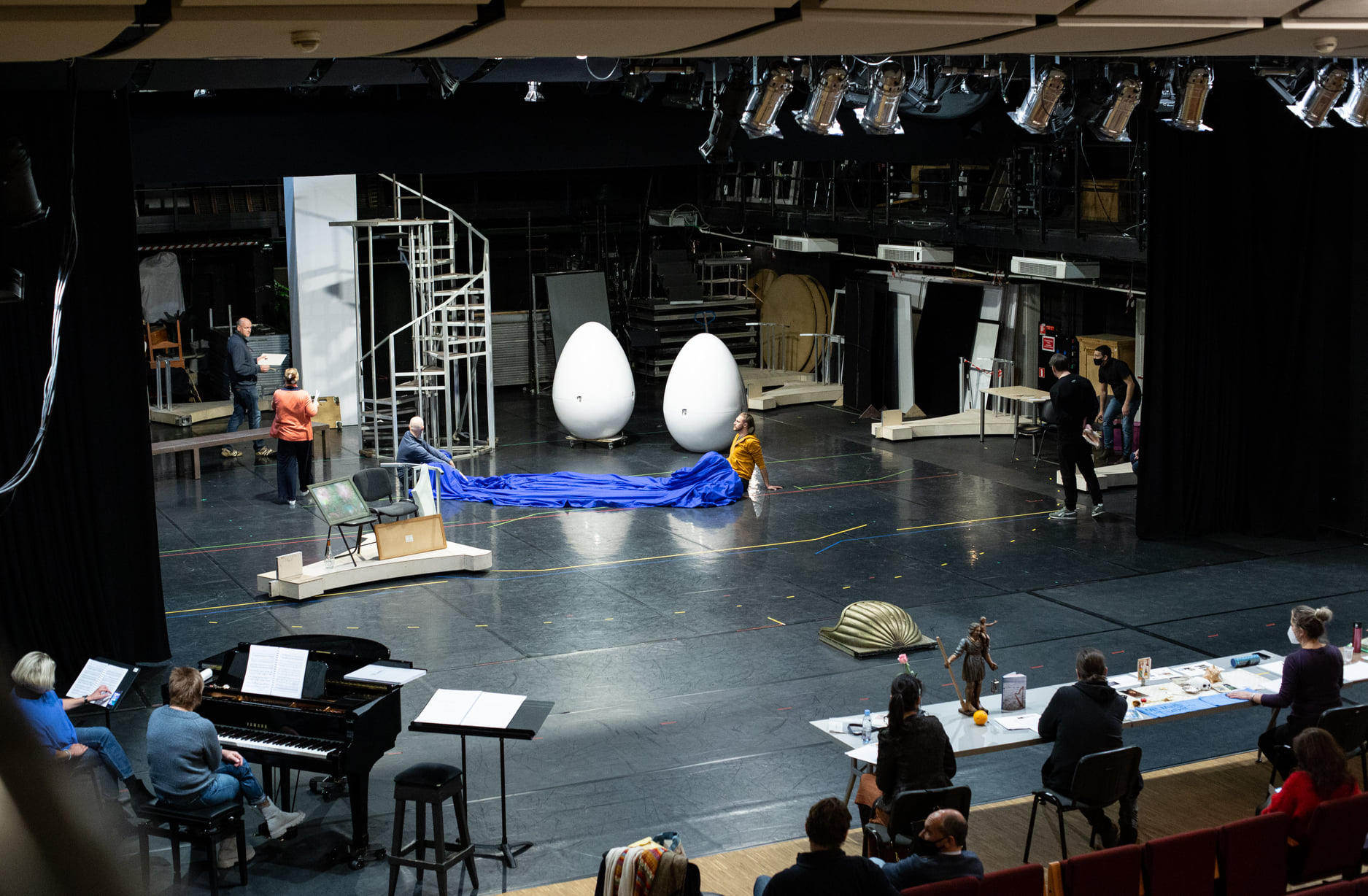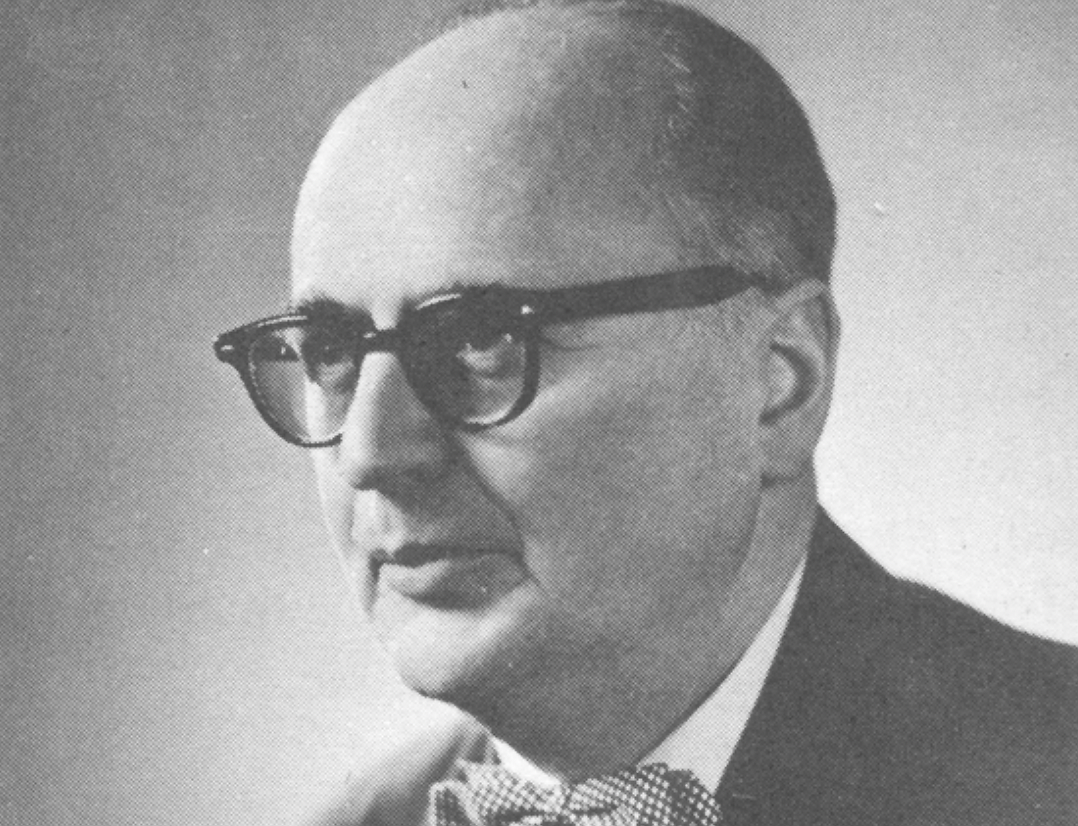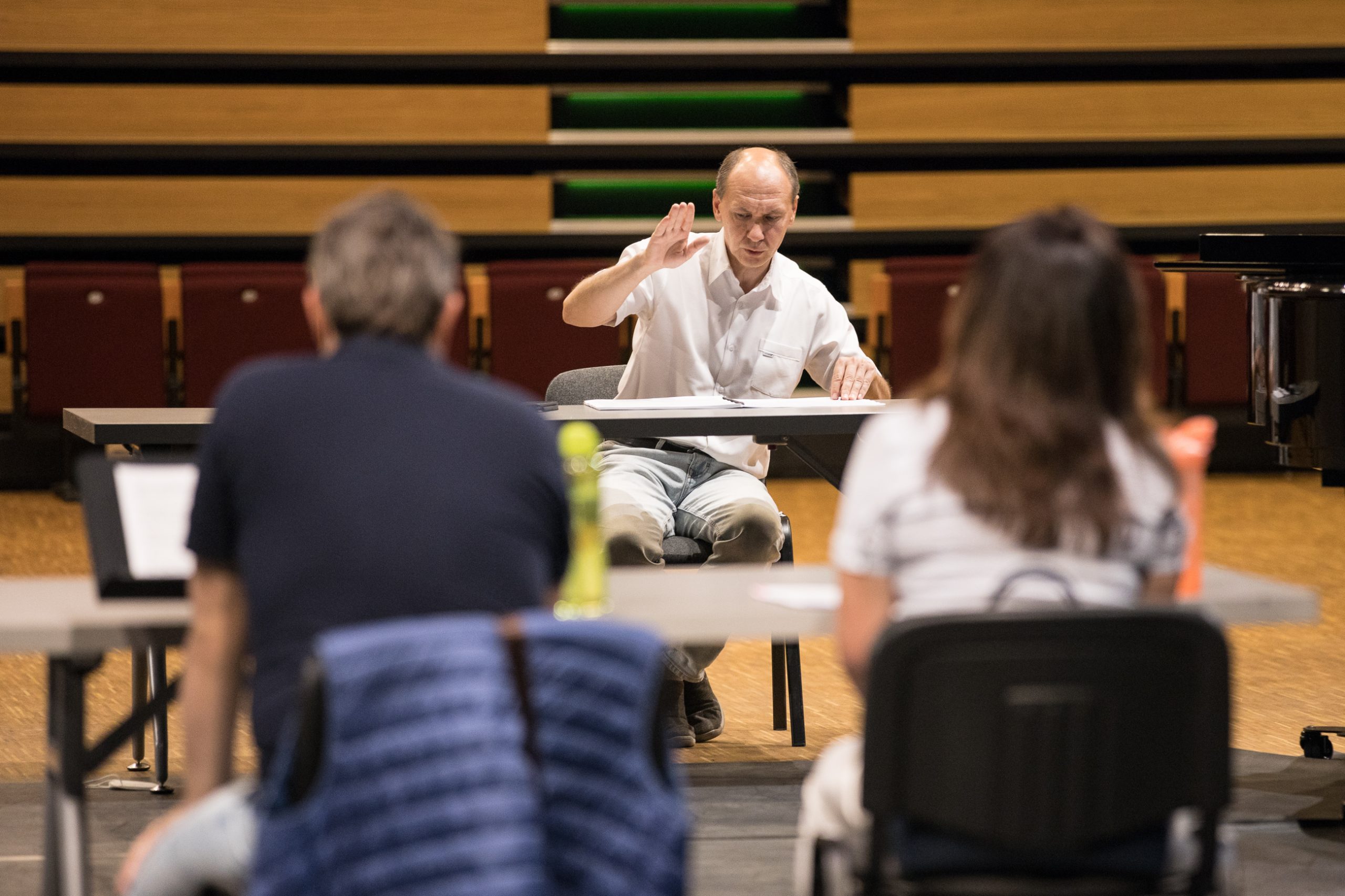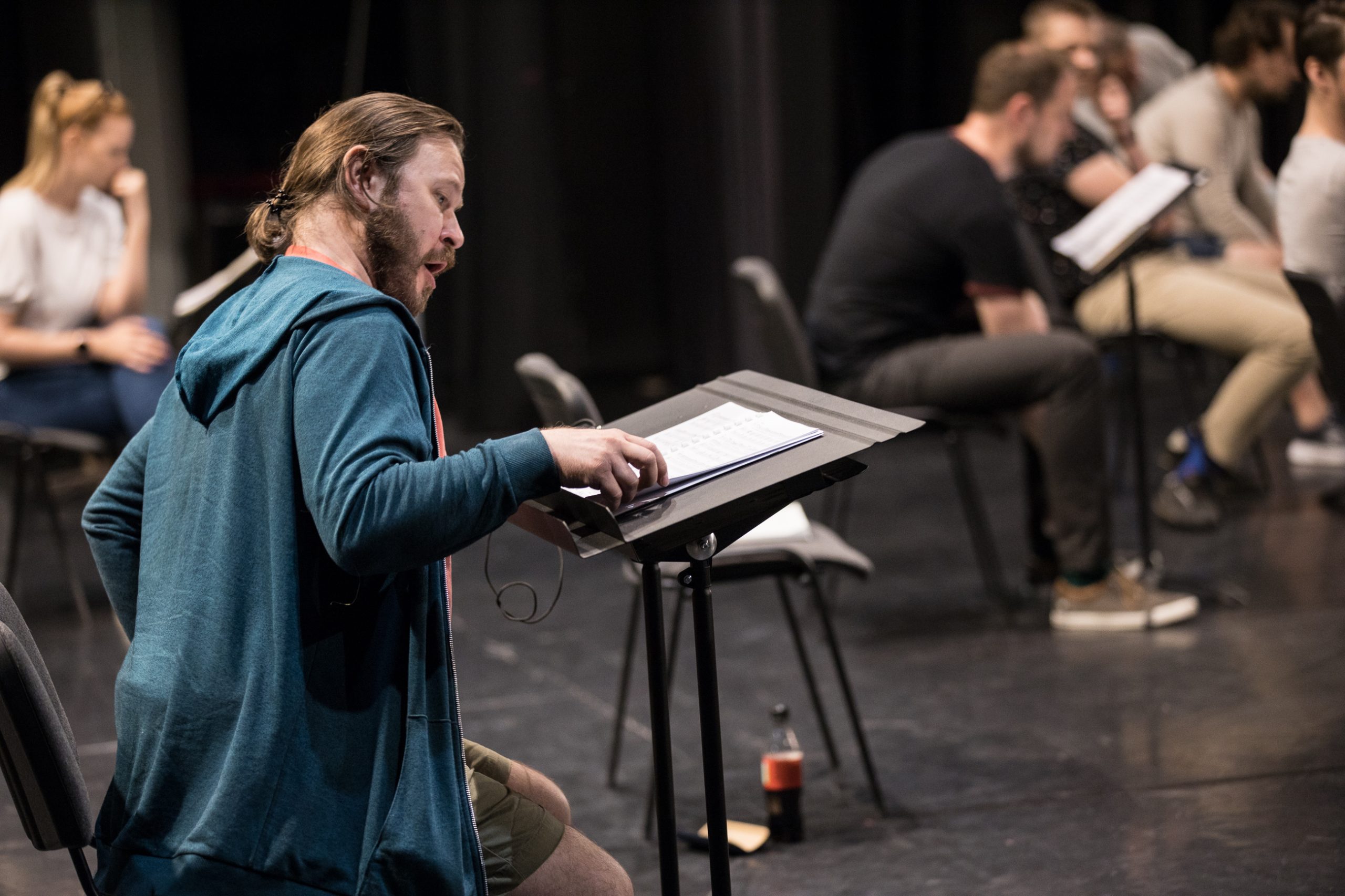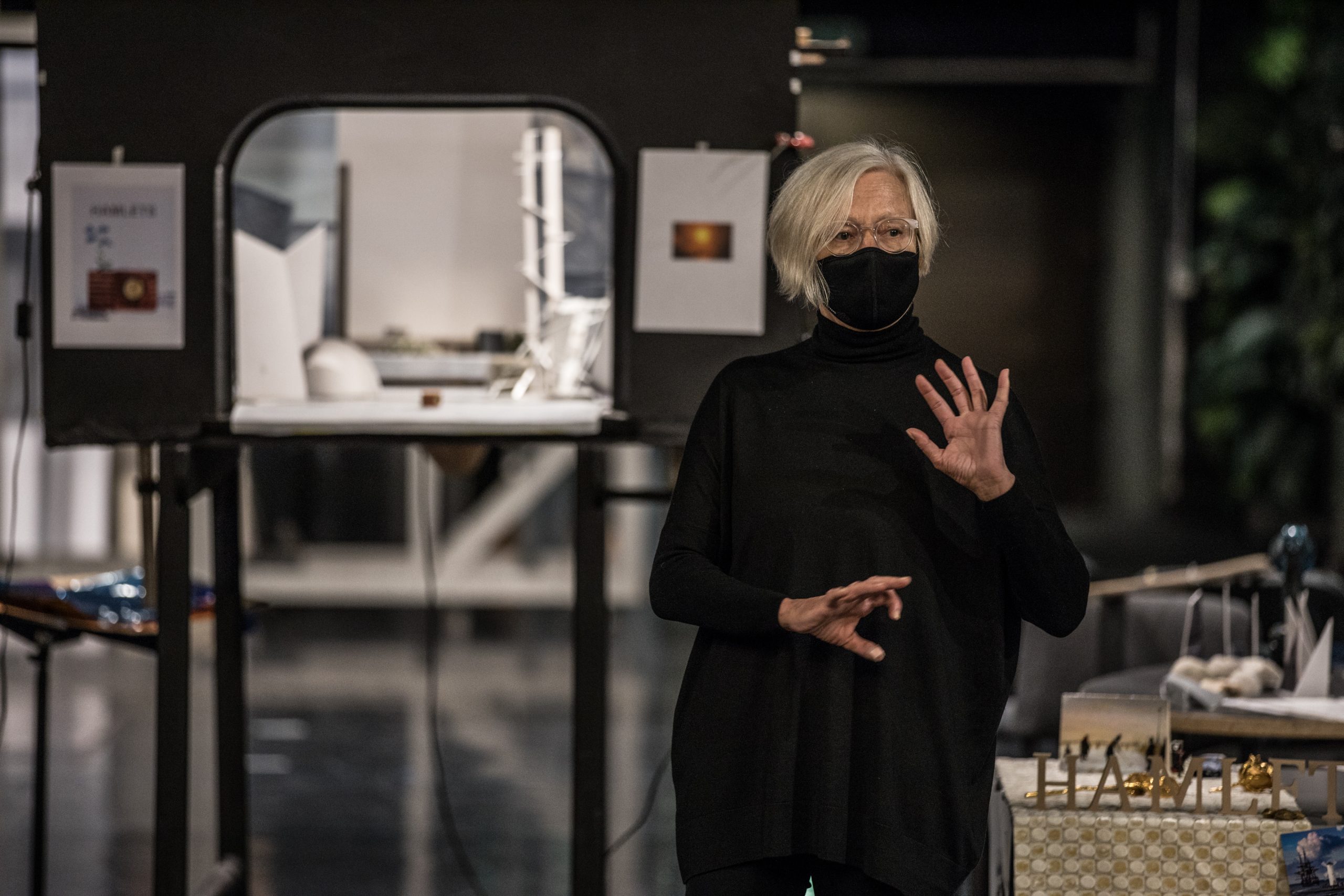Shakespeare’s play Hamlet is available in more than 75 languages, so discovering there is a Latvian version should come as no surprise. What may be surprising is that there’s an opera based on this famous play by a Canadian composer and that this little-known composer, a man who found refuge in this great country after being driven from his homeland by the tides of war, has a great deal of music worth discovering.
In 1948, Jānis Kalniņš, at the age of 44, left a stellar career in pre-war Europe to begin a new life in Fredericton, New Brunswick. There, he worked quietly for 40 years as organist and choirmaster at St. Paul’s United Church and taught music at the Provincial Teachers’ College. While he did continue to compose, this was a far cry from the career he seemed destined to have in Europe. He passed away in 2000 and is now buried back in his native Latvia.
A more detailed biography can be found at the Canadian Music Centre or with a simple Google search of his name.
It is worth noting that Jānis Kalniņš’ opera Hamlet has more connections to Canada than just the composer. Tenor Mariss Vētra, who sang the title role in the 1936 and 1943 productions of the work at the Latvian National Opera, and baritone Teodors Brilts also arrived in this country in the late 1940’s. They, along with Latvian National Opera conductor Alfrēds Štrombergs, founded the Nova Scotia Opera Association. Mr. Štrombergs created the Halifax Symphonette to accompany the Opera Association’s productions and that ensemble eventually formed the basis of the Halifax Symphony Orchestra. Alfrēds Štrombergs went on to work at the COC, U of T’s Opera School and at the Stratford Festival in the 1960s.
JĀNIS KALNIŅŠ’ OPERA “HAMLET”
After Kalniņš very successful collaboration with Mikhail Chekhov on a 1932 production of Shakespeare’s Hamlet at Latvia’s National Theatre, Chekhov, impressed with Kalniņš’ incidental music, suggested the composer turn the play into an opera. Kalniņš was at that time music director at the theatre and Chekhov a frequent guest artist.
Kalniņš was so inspired by Chekhov’s insightful and thought-provoking interpretation of the play that he too was convinced Hamlet would make a great opera.
By 1934, with one opera already under his belt (Lolita’s Wonderbird, 1934) Kalniņš was ready.
Once the decision was made, he worked quickly beginning the first act in November 1934, and nearly completing it by Christmas. The next few months were consumed by his obligations as a principal conductor at the Latvian National Opera, a position he had accepted in 1933 after a decade as music director at the National Theatre. The second act of Hamlet was sketched out sporadically as time would allow throughout that winter.
The following summer (1935) he travelled to Berlin and Salzburg to study with conductors Leo Blech and Erich Kleiber. Kalniņš was only 30 with just two seasons at the LNO under his belt, but he impressed them so much, they welcomed him as a colleague. They refused to take his money for coaching and Erich Kleiber arranged a pass so he could attend all the rehearsals for Festival events and watch and learn from great conductors like Toscanini, Bruno Walter and Felix Weingartner.
Kleiber even arranged a room for him, with a piano, so he could continue composing. In less than a month, from June 29 to July 24, he completed his Hamlet.
There have been at least 40 Operas based on Hamlet since 1812 but none have managed to break into the standard repertoire, with the possible exception of the Ambroise Thomas’ version. It still occasionally gets performed but invariably with controversy over the libretto’s treatment, or more accurately, “mistreatment” of the play.
Shakespeare’s characters are complex. They struggle with the subtleties and the inherent hypocrisy of human nature. Shakespeare’s Hamlet has 30 characters and would run about 4 hours if presented uncut.
Kalniņš, with a decade’s experience as Music Director at Latvia’s National Theatre and now a Principal conductor at the Opera felt he was up to the task of editing the play for opera.
In the 1930s Jānis Kalniņš spoke little English, so he relied on a Latvian translation of the play by Jūlijs Roze (1892-1972). Kalniņš reduced the number of characters to 16 (plus a chorus) and eliminated a number of sub-plots. Rosencrantz, Guildenstern, Osric, Fortinbras and others are gone. Kalniņš did not re-imagine the story or even write a new libretto, he just crossed out the lines and characters that in his view, would complicate the opera. In effect, he distilled Shakespeare’s complex play to a story of Palace intrigue, betrayal, murder and revenge… a classic opera plot! The fact he used Shakespeare’s words (in translation) makes restoring the libretto back to English relatively simple. It’s all Shakespeare.
In Kalniņš’ Hamlet, Shakespeare’s original 5 Acts and 20 Scenes are reduced to 3 Acts and 10 scenes.
Many of the lengthy monologues are shortened and some are completely deleted. What is missing from the text is brilliantly replaced by very expressive and effective music that supports the drama unfolding on stage.
Unlike Thomas, Kalniņš didn’t use French Grand Opera as his model. There aren’t any show stopping coloratura arias that would put the focus on the performers. Here, the music serves to illustrates the text and underscores the character’s state of mind.
After the premiere at the LNO in February of 1936, reviews in Latvia were positive, especially from musicians, even though Kalniņš’ musical language was considered “modern”.
Latvia was, at the time, a country with very conservative musical traditions still steeped in 19th century Romanticism. His use of chromaticism, dissonance and hints of Wagner-like leitmotifs was something new in Latvian music. European reviewers, however, were especially enthusiastic.
The London Times critic and others from Italy and Sweden predicted the opera would be embraced by Europe. Then World War II intervened. When Jānis Kalniņš went into exile to escape the Soviet occupation of his homeland, landing in Canada in 1948, his music ceased to be performed in Soviet occupied Latvia.
Latvia regained its independence in 1991 and The Latvian National Opera is once again presenting a new production of Kalniņš’ Hamlet scheduled to open on January 13, 2022. It will be interesting to hear what contemporary critics say. Hamlet is clearly no longer modern. What will the reaction be?
In the 1970’s, after Jānis Kalniņš had lived in Canada for more than 25 years and now spoke excellent English, he expressed some regret that he had composed the opera in Latvian. He was resigned that this work, undeniably one of his greatest, would never reach a broader audience. But that was the 70s!
Now, thanks to Lotfi Mansouri, then General Director of the Canadian Opera Company in 1983, John Leberg, Director of Operations at the time and Gunta Dreifelds, surtitles are universally accepted in opera houses around the world. One major obstacle has been removed!
What remains, however, is finding top rank singers, outside of Latvia, willing to sing in a language they would need to learn for just one opera. However, we can always hope. Leoš Janáček’s Jenůfa is sung in Czech. Could Latvian be that much harder?
The Opera ends with the Chorus singing an absolutely ethereal setting of the famous funeral hymn Integer vitae… sung in Latin. This is one of Kalniņš’ very few departures from Shakespeare’s text. There is nothing like it in the play. It’s an elegant solution to a problem caused by the elimination of Fortinbras and other characters, who, in the play, provide the final comments on the tragedy of noble Hamlet’s life and his death at the hands of sinners. It follows Hamlet’s dying words to his friend Horatio:
“…in this harsh world draw thy breath in pain, to tell my story… the rest is silence.”
As Hamlet dies, the chorus, ever so quietly, begins to sing the Integer vitae.
It’s a stunningly beautiful ending to this wonderful opera… and a moving summary of Shakespeare’s complex study of man’s obsession with revenge. By closing with these words from an Ode by Roman lyric poet Horace, Jānis Kalniņš offers this lesson (perhaps his lesson):
“If you’ve lived a pure (and honourable) life, you don’t need earthly weapons to save your soul” (Horace Ode 1.22)
Latvian National Opera’s Hamlet runs Jan 13 to Jan 21. Details and tickets here.
Artur Jansons (MMUS; BMUS Juilliard) is Chair of the Toronto Latvian Concert Association. (https://

